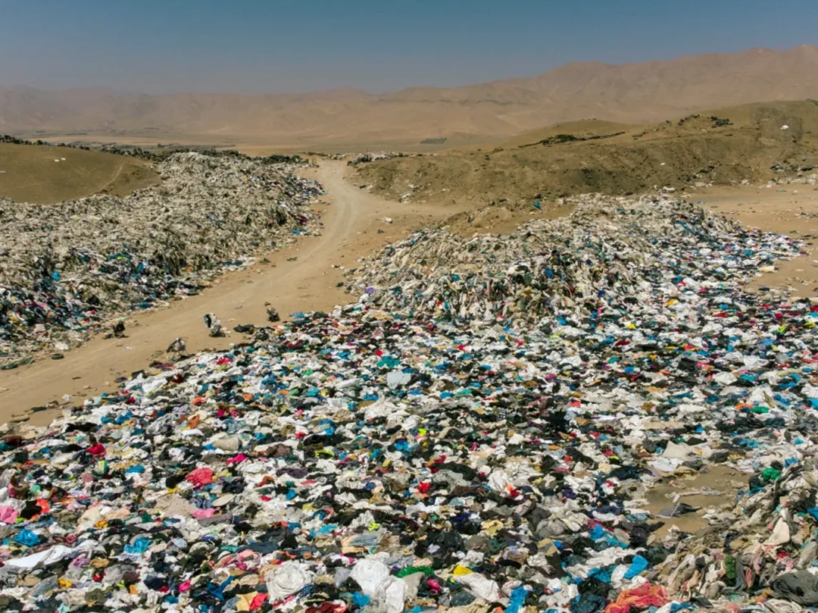In an alarming visual manifestation of the fast fashion industry's impact on our planet, a mountain of discarded clothes has emerged in the remote Atacama Desert in Chile. This mountain, weighing a staggering 39,000 tons, has grown steadily over the years, serving as a stark reminder of the environmental consequences of our throwaway culture. Visible even from space, it represents an urgent call to address the destructive practices of the fashion industry.

Trash Clothes from seen from space images by SkyFi
The Fast Fashion Phenomenon
Fast fashion, characterized by its rapid production and turnover of trendy clothing at low prices, has gained immense popularity over the past few decades. Brands eager to meet consumer demands for constantly changing styles and affordable clothing have adopted unsustainable practices. Fast fashion prioritizes speed and quantity over quality and sustainability, leading to a detrimental impact on both the environment and workers in the supply chain.
The Atacama Desert's Silent Witness
Located in northern Chile, the Atacama Desert is known for its arid conditions and barren landscapes. Against this backdrop, a peculiar sight has emerged—an ever-growing mountain of discarded clothes. The scale of this mountain, estimated to be visible from space, is a powerful symbol of the sheer volume of waste generated by the fashion industry.
The Impact
The environmental consequences of fast fashion are immense. The production of garments requires vast amounts of resources, including water, energy, and raw materials. From the cultivation of cotton to the chemical-intensive dyeing and finishing processes, each step leaves behind a substantial ecological footprint. Additionally, the synthetic fibers used in many fast fashion garments take centuries to decompose, exacerbating the problem of textile waste.
The detrimental effects of the fast fashion industry extend beyond the environment. The production process often occurs in countries with lax labor regulations, leading to poor working conditions and exploitation of workers. Low wages, long hours, and unsafe environments are distressingly common. The industry's relentless pursuit of profit at the expense of human well-being is a pressing concern that needs to be addressed.
Sustainable Solutions
The existence of the garment mountain in the Atacama Desert should serve as a catalyst for change. The fashion industry, consumers, and governments must collaborate to create sustainable solutions that address the pressing issues at hand:
- Consumer Awareness: Educating consumers about the true cost of fast fashion and the benefits of sustainable alternatives can lead to more informed choices.
- Extended Producer Responsibility: Fashion brands should take responsibility for the entire lifecycle of their products, implementing recycling and take-back programs to reduce waste.
- Ethical Production Practices: Companies must prioritize fair wages, safe working conditions, and transparency throughout their supply chains, fostering a more sustainable and equitable industry.
- Circular Economy: Encouraging the adoption of circular economy principles, such as recycling, upcycling, and repair, can minimize waste and extend the lifespan of garments.
- Policy Interventions: Governments can play a crucial role by enacting regulations that promote sustainable practices, such as imposing taxes on excessive waste and incentivizing eco-friendly production.
The mountain of discarded clothes in the Atacama Desert serves as a haunting reminder of the fast fashion industry's wasteful practices. It highlights the urgent need for change in the way we produce, consume, and dispose of clothing. By embracing sustainable alternatives, promoting ethical practices, and fostering a collective responsibility, we can move towards a fashion industry that respects both the planet and the people who make our clothes. Let this monumental spectacle serve as a wake-up call to reshape the future of fashion and preserve the beauty of our planet for generations to come.







